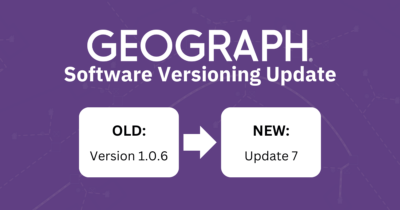As 2024 unfolds, the landscape of geographic information systems (GIS) continues to develop, with companies like Geograph working alongside Esri’s ArcGIS to meet evolving industry needs. During a recent presentation titled “Next Generation Plans,” Jasen Kintner outlined key updates from the past year and looked at what lies ahead for CrescentLink and its integration with ArcGIS.

Steady Progress Over the Past Year
In late 2023, CrescentLink for ArcGIS Pro (CL Pro) was officially released. Since then, it has seen consistent updates—eight in total. These updates were aimed at refining the platform and ensuring better compatibility with Esri’s latest releases. The development team also expanded, which has allowed for a more streamlined release schedule. Compatibility testing with CL Web Experience and ArcGIS Enterprise versions 11.1 and 11.2 was a priority, ensuring a smooth experience for users across platforms.
Around 20% of CrescentLink users have already adopted CL Pro, and while this is a promising start, there is still room for growth. The focus remains on making CrescentLink more accessible and functional for its user base.
Updates from Esri
Esri has continued to release updates to its ArcGIS platform, with ArcGIS Pro versions 3.2 and 3.3 already available. ArcGIS Pro 3.4 is expected to launch in October 2024. On the Enterprise side, versions 11.2 and 11.3 have introduced new user types and extensions. Esri’s release schedule appears to be increasing in frequency, with updates projected to continue through 2025, including ArcGIS Pro 3.5 and Enterprise 11.5.
These updates introduce new functionalities and frameworks, including the .Net 8 Framework and Desktop Runtime, which signal a broader effort to modernize the tools available to GIS professionals.
CrescentLink’s Current Focus
Looking forward, CrescentLink is aligning its development with Esri’s ArcGIS Services. These services organize and deliver spatial data in formats like feature and image services. With ArcGIS Server managing data and ArcGIS Portal providing the interface, CrescentLink is working to ensure smooth integration with these systems.
The upcoming Update 9 will focus on compatibility with ArcGIS Enterprise versions 11.3 and 11.4. Additionally, the final planned update for CrescentLink for Desktop will come in the last quarter of the year. These two updates are focused on aligning with Esri’s product lifecycles.

Future Development Plans
In the long term, CrescentLink aims to expand its functionality through third-party integrations and additional features like Logical Circuits Management. These developments are intended to streamline workflows and allow users to effectively manage more complex data structures.
CrescentLink’s direction suggests a shift toward broader integration and the enhancement of current tools rather than the introduction of entirely new systems. The focus remains on making the platform more efficient and adaptable for its user base.
Conclusion
The “Next Generation Plans” presentation provides a clear roadmap for CrescentLink’s future. With updates focused on enhancing compatibility with Esri’s evolving ArcGIS services and plans for further improvements in functionality and integration, the path ahead seems steady. While the GIS field is constantly changing, CrescentLink and ArcGIS appear committed to keeping pace, offering tools that aim to meet both current and future needs.




